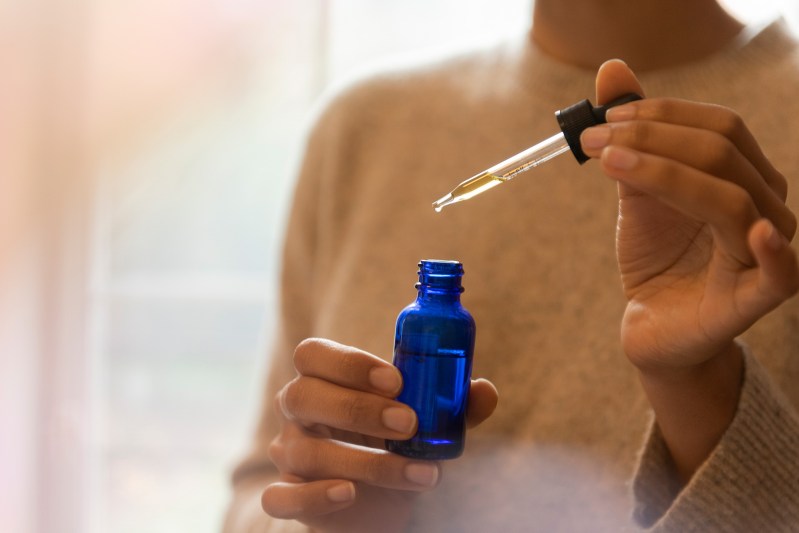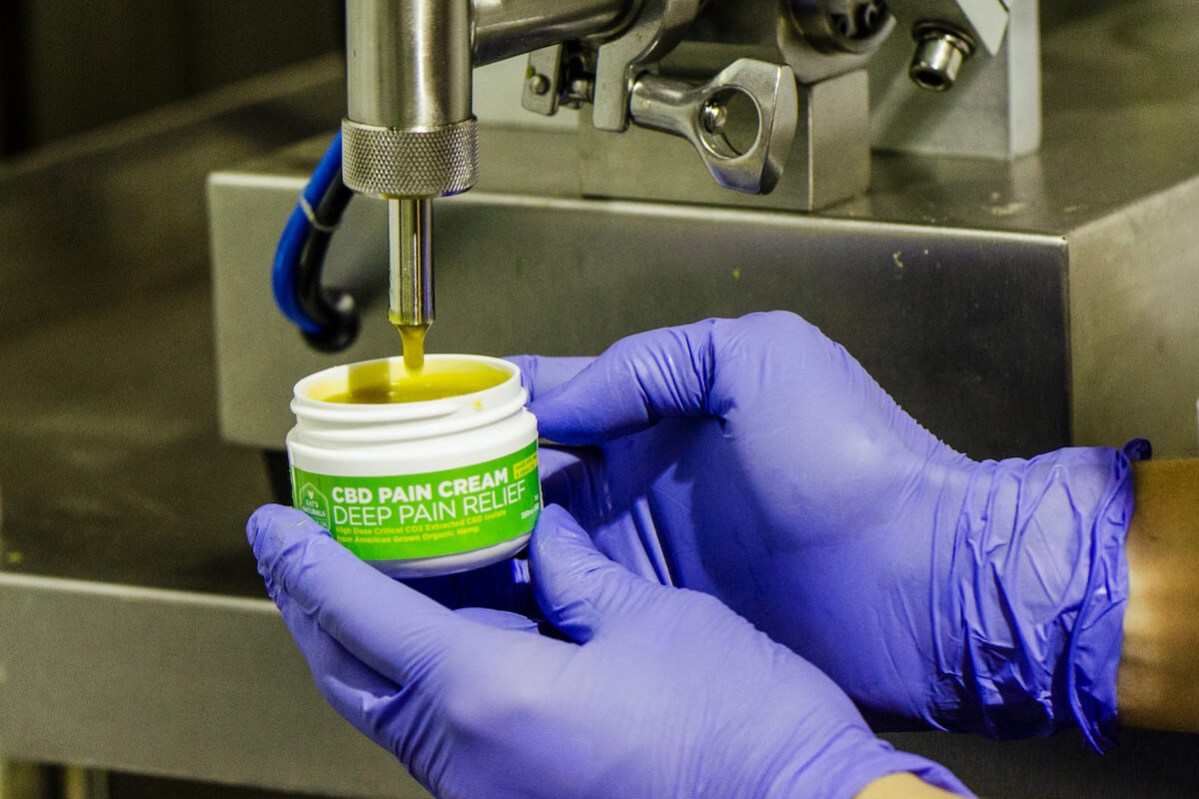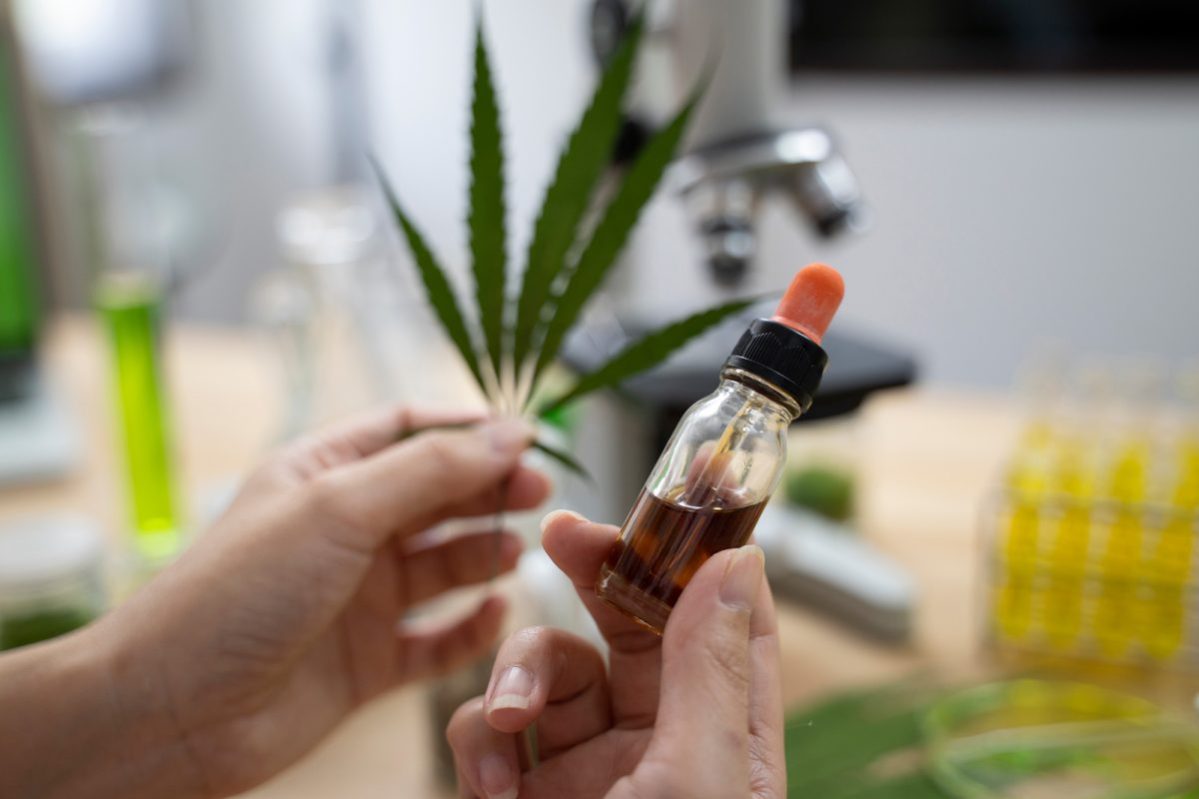
It’s only been a few years since CBD, or cannabidiol, made its splashy debut on the mainstream market, and already it’s hard to imagine what we’d do without it. Cannabinoid has been quickly eclipsing its psychoactive companion — tetrahydrocannabinol is the psychoactive component that produces the high — by offering gentle, effective relief for everything from insomnia and chronic pain to anxiety and depression.
But in recent years, we’re discovering that CBD isn’t the only cannabinoid with amazing restorative properties. Thanks to a number of devoted growers, grassroots scientists, and industry tinkerers, we’re learning about a fresh crop of cannabinoids that promise even more uses from this long-misunderstood cannabis plant. To find out more about these promising compounds, we spoke with Kat Merryfield of Kat’s Naturals and Adam Stites of Mirth Provisions. Both entrepreneurs have not only built thriving companies around the health-promoting properties of cannabis, but are invested in continuing research into its unfolding applications.
What is CBD?
Let’s get this out of the way: CBD, short for cannabidiol, is a naturally occurring compound found in the leaves, flowers, and stem of hemp and cannabis plants. It is not the part of the cannabis plant that gets you high.
The New CBs On the Block
While these “new” cannabinoids may have only recently come under the microscope, they aren’t truly new at all — they’ve been there all along, just flying under the radar. But, as Stites says, “These minor cannabinoids are the cutting edge part of cannabis.”
First, there’s cannabigerol, or CBG, which Merryfield calls the “alpha” of cannabinoids, the mother molecule from which all other cannabinoids spring. “Everything in the cannabis plant starts with CBG. As it synthesizes during a six- to eight-week flowering period, it changes into all these different molecules — THC, CBD, and CBC.”
A high-CBG plant offers an analgesic effect; without all the other cannabinoids that promote relaxation and consciousness expansion, CBG has more of an energizing, mind-clearing effect. Merryfield compares it to drinking a cup of green tea versus having a glass of wine. Research has shown that CBG is highly antibacterial and even helps inhibit tumor cell growth.
Then, there’s cannabichromene, or CBC, which is believed to offer pain relief, assist with digestive and gastrointestinal disorders, possess antibacterial and antifungal efficacy, and could potentially contribute to the regeneration of brain cells. If that sounds similar to what cannabis does anyway, it’s because CBC is believed to mainly act as an intensifier of other cannabinoids.

Finally, there’s cannabinol, or CBN, a molecule that comes at the end of the cannabinoid synthesis chain. It doesn’t show up until the plant starts to decay. This cannabinoid, says Merryfield, is a potent sedative, and brings many of the effects people associate with stoners: lethargy, increased appetite, a groggy psychoactive after-buzz. “Say you find that old bag that’s been sitting in the sun in the back of your car. It has a dull taste, it makes you couch-locked and a little hungry. That’s the effect of CBN,” Merryfield explains. Stites calls it “an ‘end of the day’ sort of compound, when you want to relax and not be social,”
Cannabinoid Challenges
All of these cannabinoids present challenges in extracting them from a hemp plant, simply because the plant produces a much smaller volume than it does of THC and CBD. As a precursor molecule, CBG is quickly synthesized by the plant into other cannabinoids, while CBN doesn’t even show up until the plant is starting to decay. Over the last few years, scientists have been working on hybridizing a plant that doesn’t synthesize all of the CBG, so that larger amounts of this molecule can be isolated and studied. They have also been working on a process to break down extracted CBD into CBC and CBN, for the same purpose.
Stites’ team has been able to isolate CBN fairly simply, through an extra-long decarboxylation of the cannabis plant. “But for CBG or other minor cannabinoids,” he says, “the extraction versus the price is prohibitive. These cannabinoids represent such a small percentage of the plant’s biomass, you’d need a literal metric ton of cannabis to extract 1,000 servings.” With little name recognition around these cannabinoids, there’s little market demand for them, which means companies can’t be sure of making back the money they spend on isolating these rarefied compounds.
“You’d need a literal metric ton of cannabis to extract 1,000 servings.”
Some cannabis companies have taken the shortcut of inflating the anecdotal claims around a given cannabinoid. This creates a ravenous market demand which allows them to sell a lot of product, which in turn funds the extraction process. However, Merryfield and Stites agree this is the wrong way to go about it.
“When CBD first came out,” Merryfield recalls, “it was like sprinkling fairy dust everywhere. I was almost embarrassed to say I was in the industry. The market was saturated — the pumpkin patch, the furniture store, the gas station were all selling CBD.” With little regulation on the industry and even less scientific data informing people’s choices, there was no consistency to the products people were trying.
No surprise, she says, that people got tired of CBD. “They’d say, ‘This doesn’t work,’ and throw it out.”
Stites says that as these “new” cannabinoids gain more recognition, they will become more available. “If there’s sufficient demand for this product, cultivators could start to breed the cannabis in a manner that expresses these cannabinoids in larger quantities,” he explains.
Of course, that will also require conscientious companies to ensure high standards for their CBG and CBN products. The answer, says Merryfield, is science. Certification and regulation will lead to quality control that results in safe, effective products being used by a well-informed public.
What to Look For
At this point in the game, the best way to ensure that you’re getting a good product is to talk to people. If there’s someone who has found great success with a CBD product from a specific company, start there.
“I’m very passionate about this plant, always have been,” Merryfield says. “And I do think it’s here to stay. You can’t stick the genie back in the bottle. It’s gaining momentum, and we need to embrace it, be educated, get our regulations in place, and continue to work together to move forward to use this as a medicinal supplement.”
Further Reading
- What is CBD? A Brief Introduction to the Benefits of Cannabidiol
- Indica vs Sativa: An Introduction to the Major Cannabis Types
- Why Learning About Quality Cannabis Shouldn’t Strain Your Brain
The thing to remember about the cannabis plant, says Merryfield, is that the different cannabinoids are very synergistic in how they work. Each has its own special function while complementing the functions of the others. Rather than isolating specific cannabinoids in her products, Merryfield prefers to pair them in different combinations to see how they serve a specific purpose. So, for CBG, that might be something like a cancer-fighting drug, while CBN could be a sleep aid or an anti-anxiety medication.
Stites agrees that the “magic” of cannabis lies not so much in individual compounds, but in the entourage effect of the whole plant. “Nature is more complex than, ‘Just pull this out and consume it.’ It’s how do all these compounds work together — the terpenes, the cannabinoids, the relative ratio of both? Those things in concert are going to serve to create a beneficial effect.”

So how should people begin using these “new” cannabinoids? The first thing, says Merryfield, is not to view them as an instant cure-all. As with any form of plant medicine, it’s best to start slowly. “Everyone’s system is different. Our brains are not wired exactly the same. Microdosing is a great way to find your perfect place.”
While she looks forward to a time when the industry gains more respect (not to mention funding for scientific research), the current Wild West state of cannabis research offers a rare opportunity for highly trained tinkerers like her to plot out new paths in medicine. “In the future, we could build custom-made cannabis products to help those people specifically with what they need. It’s such an exciting time.”
Stites agrees, “Cannabis is almost unlimited, how you can pair things together to produce an effect. If you enjoy the substance and that gets you excited, it’s a cool time to be in the industry.”
Terms to Remember
- CBD: Cannabidiol
- CBG: Cannabigerol
- CBC: Cannabichromene
- CBN: Cannabinol
- THC: Tetrahydrocannabinol


